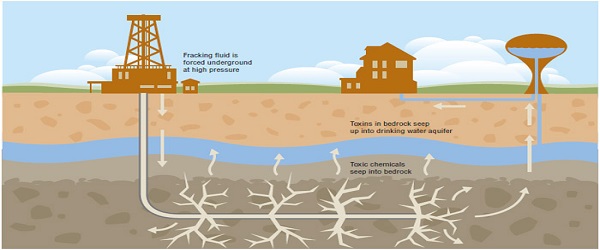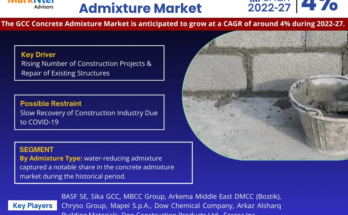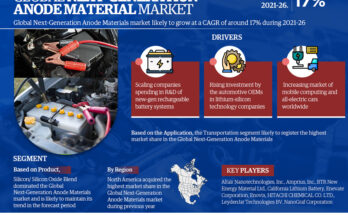Rising fracking activities and low-cost energy delivery are prime factors driving the growth of Global Fracking Chemicals market in the forecast period, 2024-2028.
According to TechSci Research report, “Fracking Chemicals Market – Global Industry Size, Share, Trends, Opportunity, and Forecast, 2018-2028F”, The global fracking chemicals market is anticipated to grow at an impressive CAGR in the forecast period 2024-2028. Fracking chemicals also referred as Hydraulic Fracturing Chemicals are applied on the field when hydrocarbon in reservoir encounters a heavy resistance to flow through porous media. When natural drive of the reservoir is not sufficient to push the hydrocarbon molecules, then certain chemicals are injected from surface to the bottomhole. These chemicals are technically referred as Fracking Chemicals and the overall procedure for this secondary recovery of crude oil is known as Hydrofracking or Hydraulic Fracturing. According to our research, United States held the largest market share in 2022, in terms of drilling via Hydraulic fracturing route, owing to the cause of lesser dependency on major oil and gas producing majors (like Gulf countries or Russia) for crude oil.
Browse over XX market data Figures spread through XX Pages and an in-depth TOC on “Global Fracking Chemicals Market”
https://www.techsciresearch.com/report/fracking-chemicals-market/14434.html
Global Fracking Chemicals Market is segmented based on Well type, Fluid type, and Application:
Based on well type, the market is divided into Vertical and Horizontal/Directional. Horizontal well segment held the largest share in Fracking Chemicals market in 2018. Horizontal wells leverage drillers to a wider surface area and oil extraction at an optimum rate from an undersaturated reservoir. On the other hand, oil is readily extracted from vertical wells using shallower boreholes. The total production increases because of a decrease in the uneven pressure distribution, brought on by the flow geometry of horizontal wells along the long drain. Field’s undissolved, free gas and other petroleum deposits can be tapped using horizontally drilled wells. This makes drilling technology even easier to extract enormous amounts of natural gas stored in the reservoir. In comparison to vertical wells, horizontal wells are more productive and efficient since they allow for the extraction of more energy with lesser wells. Although there are huge merits of horizontal wells; drilling these wells costs huge capital and are highly complicated.
Vertically drilled wells provide access only to the natural gas which is available at the well head in the form of bubbles. Vertical wells do not need directional well-boring, as they are drilled without any deviation. This factor makes the vertical wells cost effective and less complicated over horizontal wells. Technical advancements in directional drilling technology have made vertical drilling obsolete.
Based on application, the market is divided into Friction Reducer, Biocides, Clay Control Agent, Crosslinkers, Surfactants and Others. As per market estimation, the Friction reducer segment will experience the highest market share during the forecast period. By minimizing pipe friction, friction reducers permit high injection rates. Buffers are used to keep fluid pH levels stable under difficult circumstances like high pressure and temperature. Through sodium-potassium ion exchange, the clay control agent interacts with the clays in the rocks and formations and aids in stabilizing the clay in shale structure.
Major operating companies operating in global fracking chemicals market are:
- BASF SE
- Dow Chemicals Company
- Chevron Philips Chemical Corporation.
- Solvay S.A.
- Albemarle Corporation
- Croda International Plc
- Clariant AG
- Saudi Basic Industries Corporation
- Akzo Nobel N.V.
- Innospec Inc.
Customers can also request for 10% free customization on this report.
North America demonstrates the most promising growth among other regions for Fracking chemicals market. According to the TechSci Research estimates, current market figures reflect the regional dominance which would likely replicate over the forecast period. This can be attributed to the Directional Drilling Industry, which is being continually developed in the region, and therefore the consumption of fracking chemicals in the region is high.
“Due to rise in energy consumption, Asia Pacific is projected to have significant growth in the decade ahead. China, which has the most shale reservoirs after the US and Canada, is propelling growth in the region. Because of increased oilfield output, which is being driven by deep-water discoveries in the North Sea, Europe is also projected to become a valuable market eventually. Over the course of the forecast period, the region is anticipated to offer prospective prospects to fracking fluid and chemical companies as the development of offshore and unconventional reservoirs advances there.” said Mr. Karan Chechi, Research Director with TechSci Research, a research-based global management consulting firm.
“Fracking Chemicals Market- Global Industry Size, Share, Trends, Segmented By Well Type (Vertical, Horizontal/Directional), By Fluid Type (Water-based, Foam-based, Cryogenic (Liquid CO2)), By Application (Friction Reducer, Biocides, Clay Control Agent, Crosslinkers, Surfactants, Others), By Region and Competition, has evaluated the future growth potential of global fracking chemicals market and provides statistics & information on market size, structure, and future market growth. the report intends to provide cutting-edge market intelligence and help decision makers take sound investment decisions. Besides, the report also identifies and analyzes the emerging trends along with essential drivers, challenges, and opportunities in global fracking chemicals market.”
Contact
Mr. Ken Mathews
708 Third Avenue,
Manhattan, NY,
New York – 10017
Tel: +1-646-360-1656
Email: [email protected]
Website: https://www.techsciresearch.com



